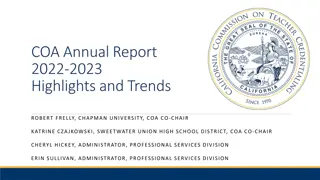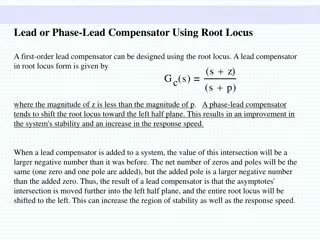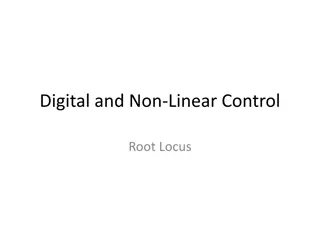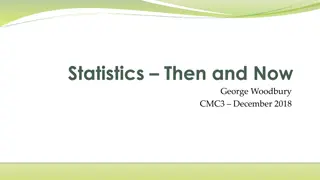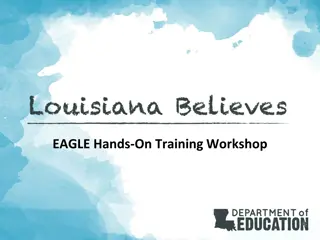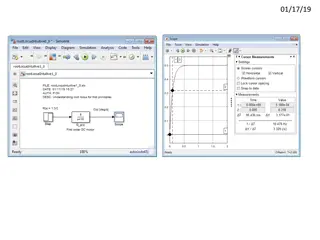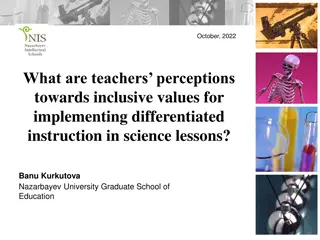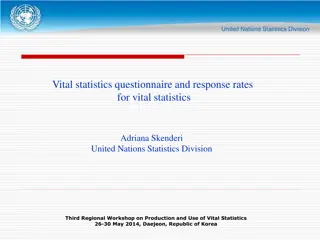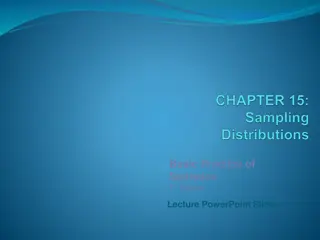Assessing Teachers' Preparation to Teach Statistics Using LOCUS Tool
Explore how LOCUS assessments serve as a valuable tool to measure teachers' readiness to teach statistics, addressing the challenges in teacher preparation at various educational levels. The assessment focuses on conceptual understanding, experimental design, data collection, and analysis, offering insights into new and experienced teachers' statistical knowledge. Learn about the importance of formative assessment and research tools in enhancing teacher professional development in statistics education.
Download Presentation

Please find below an Image/Link to download the presentation.
The content on the website is provided AS IS for your information and personal use only. It may not be sold, licensed, or shared on other websites without obtaining consent from the author. Download presentation by click this link. If you encounter any issues during the download, it is possible that the publisher has removed the file from their server.
E N D
Presentation Transcript
LOCUS as a Tool to Measure Teachers Preparation to Teach Statistics Catherine Case, Douglas Whitaker, Steven Foti, and Tim Jacobbe University of Florida
The challenge of teacher preparation MET2 recommends that all pre-service middle and high school teachers take a statistics course in addition to introductory statistics. Pre-service teachers STEM majors Application- oriented Theoretically- oriented Emphasis on data exploration Emphasis on probability Randomization- based inference Traditional inference MET2 also calls for professional development of in-service teachers.
The challenge of teacher preparation Preparation should span developmental levels. Example: Variability in data at levels A, B, and C What do new and experienced teachers know about statistics? New courses and professional development programs necessitate an assessment tool to evaluate impact.
LOCUS Assessments The Levels of Conceptual Understanding in Statistics (LOCUS) assessments can be used as a formative assessment or as a research tool. Development based on Evidence-Centered Design Mapping of GAISE onto CCSSM Creation of Evidence Model Test Specifications Item Writing and Revision Pilot Assembly of Final Forms Item Revision Administration Beginning/ Intermediate Intermediate/ Advanced LEVEL A.2.3 LEVEL A.2.3 Formulate Questions GAISE LEVEL S-IC.3 CCSS EVIDENCE STATEMENT Students demonstrate the understanding that an experiment can be designed to measure the effect of treatments 25-30% Category Collect Data/Students conduct simple experiments with nonrandom assignment of treatments. how to conduct simple experiments with assignment of treatments. Interpret Results Recognize the purposes of and differences among sample surveys, experiments, and observational studies; explain how randomization relates to each. variables. 30-35% DESCRIPTION Students understand WORK PRODUCTS Students should be able to identify the experimental units, treatment groups, response variable and other 25-30% 10-15% 15-20% Collect Data 25-30% 20-25% B.2.3 Analyze Data Collect Data/Students design and conduct comparative experiments and begin to use random assignment. 30-35%
Sample items We ll give four sample Multiple Choice items. The % of students in the pilot sample that chose each option will be given after a few seconds. Feel free to pause the presentation if you want more time to read the question. Sample Constructed Response Items are being released with sample student responses in the Statistics Teacher Network newsletter this year.
A 13-year study of 1328 adults randomly selected from a population carefully monitored the personal habits and health conditions of participants. Personal habits included tobacco use and coffee consumption. Health conditions included incidence of stroke. Which of the following questions about this population CANNOT be answered using data from this study? A. Are coffee drinkers more likely to smoke than adults who do not drink coffee? Does coffee consumption cause a reduction in the incidence of stroke? Do coffee drinkers have fewer strokes than adults who do not drink coffee? What percentage of the population are coffee drinkers? B. C. D. A. 29% B. 19% C. 11% D. 40% GAISE Level C, Formulating Questions , Students should be able to formulate questions and determine how data can be collected and analyzed to provide an answer. CCSS-M Grade 6 SP.1 Point-Biserial Correlation 0.34
Lee wants to answer the question, What proportion of sophomores at my high school plan to take a foreign language class during the next school year? Which of the following methods would best allow Lee to answer his question? A. Randomly select 50 students from the high school and ask them if they intend to take a foreign language class next year. Randomly select half of the foreign language teachers in the high school and ask them how many students are taking their classes this year. Randomly select half of the sophomores taking Spanish this year and ask them if they intend to take Spanish next year. Randomly select 40 sophomores from the high school and ask them if they intend to take a foreign language course next year. B. C. D. A. 20% B. 8% C. 10% D. 62% GAISE Level C, Collecting Data , Students should understand what constitutes good practice in conducting a sample survey. CCSS-M High School S-IC.3 Point-Biserial Correlation 0.48
A fifth-grade teacher had each of his 30 students choose a chocolate chip cookie and count the number of chips in the cookie that was chosen. The data are displayed below. A. 8% B. 2% C. 59% D. 30% Point-Biserial Correlation 0.41 The teacher s chocolate chip cookie had 27 chips in it. Compared to the students results, why would his 27 chips be considered typical for these cookies? A. B. C. D. Because one cookie had 27 chips. Because one cookie had 39 chips. Because 26 out of 30 cookies had between 18 and 28 chips. Because all cookies had between 18 and 39 chips. GAISE Level A, Analyzing Data , Students compare individual to individual. CCSS-M Grade 5 MD.2
A citrus farmer grows two types of oranges: mandarin and navel. The distributions of weight for each type of orange grown on his farm are shown in the histograms below. The farmer will select a random sample of 100 mandarin oranges and a random sample of 100 navel oranges. Which sample is more likely to produce a sample mean within 1 ounce of the mean weight for its population? A. The sample of mandarin oranges because the weights of mandarin oranges are less variable than the weights of navel oranges. The sample of navel oranges because the weights of navel oranges have a greater mean than the weights of mandarin oranges. Both samples are equally likely to produce a sample mean within 1 ounce because the sample sizes are the same. It is impossible to know which sample is more likely to produce a sample mean within 1 ounce without the actual data from the samples. A. 55% B. 13% C. 18% D. 13% B. C. D. Point-Biserial Correlation 0.44 GAISE Level B, Interpreting Data , Students describe differences between two or more groups with respect to center, spread, and shape. CCSS-M High School S-ID.3
LOCUS resources Beginning/Intermediate and Intermediate/Advanced forms With pre- and post- versions for use in research Choice of formats Paper and pencil available soon (MC and CR items) Online forms available soon (extended MC only) Diagnostic reports for targeted instruction Website with commentaries for sample items under development
Thanks! Questions will be taken Wednesday, May 21 at 1:15pm Eastern Daylight Time LOCUS website (updates coming soon) http://education.ufl.edu/locus/ LOCUS PI: Tim Jacobbe, jacobbe@coe.ufl.edu Co-PIs: Bob delMas, Jeff Haberstroh, and Brad Hartlaub Graduate Assistants: Catherine Case, Steven Foti, and Douglas Whitaker
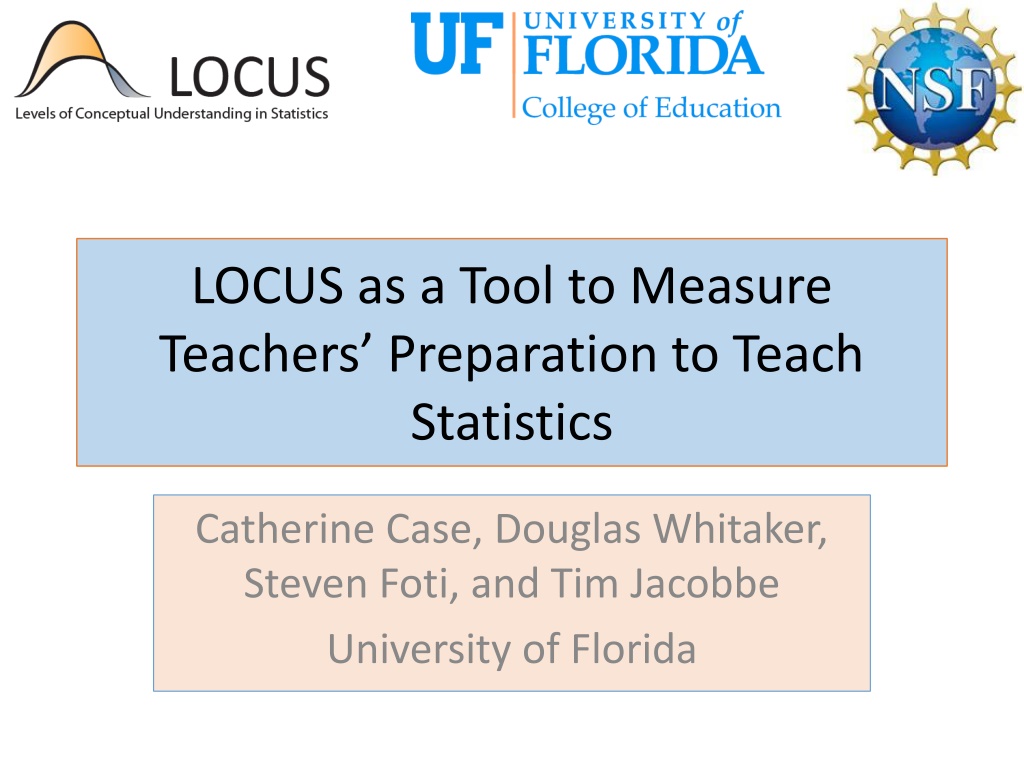

![❤[PDF]⚡ Escaping from Eden: Does Genesis Teach that the Human Race was Created](/thumb/21697/pdf-escaping-from-eden-does-genesis-teach-that-the-human-race-was-created.jpg)

